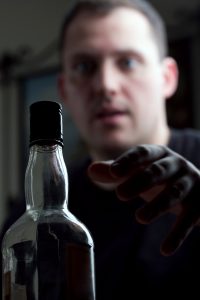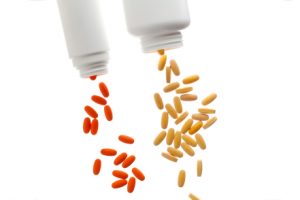The 12 step program is a mile stone process in recovery from alcohol and drugs. It stems first from a voluntary intent to change and then the process of completing that transformation. This involves recovering a complete freedom from the substance and maintaining that freedom from it to change and even help others maintain that freedom from it. It always realizes that addiction is ever present and diligence is required. One cannot simply return to the former master and source of the addiction if one truly hopes to live a free life from it. Hence the process helps one maintain the necessary support and coping strategies to build an independence from the substance albeit addiction is always lurking to reclaim the person.

The article, “The 12 Steps of Addiction Recovery” by Michelle Pugle reviews the 12 steps and its importance in changing so many lives. Pugle gives some emphasis on the qualities of each step starting with admitting one has a problem to the intermediate steps of building self to to maintaining and preserving self to serve others. Serving others is the ultimate and last step and gives the person purpose beyond his or her own short fallings prior and encourages the person to help others find the same freedom. She states,
“Alcoholics Anonymous or AA is the original recovery program that brought the world the 12 steps of recovery. The 12 steps have since been applied to other substances and types of addictions in recovery programs like Marijuana Anonymous, Al-Anon and Alateen for loved ones of alcoholics, Codependents Anonymous for people stuck in toxic relationships, Narcotics Anonymous (NA), and Workaholics Anonymous.”
“The 12 Steps of Addiction Recovery”. Michelle Pugle. April 12th, 2022. Verywellhealth.
To read the entire article, please click here
Commentary
Addiction is a chronic, relapsing brain disease that is characterized by compulsive drug seeking and use, despite harmful consequences. It is considered a brain disease because drugs change the brain—they change its structure and how it works. These changes alter the way the person behaves, thinks, and feels. People with addiction often have trouble quitting because of powerful cravings and other withdrawal symptoms. Most people with addiction need help to stop using; however, treatment can be effective.
12 Step Program
A 12 step program is a set of guiding principles outlining a course of action for recovery from addiction, compulsion, or other behavioral problems. In many cases, the 12 steps can be applied to a wide range of disorders, providing a framework for solving these issues. . The steps are designed to promote positive change in individuals struggling with addiction, and to support their continued sobriety. The 12 steps address issues such as powerlessness, denial, and isolation; they emphasize the importance of admitting one’s wrongs, making amends, and helping others who are still struggling. The original twelve steps were published in the book Alcoholics Anonymous in 1939
The first step of the 12 steps is admitting that one has a problem. This step is important because it allows individuals to begin the process of recovery and start to take responsibility for their actions. It is also a crucial step in developing a support system and seeking professional help.
The second step of the twelve steps is to come to believe that a power greater than ourselves can restore us to sanity. This step requires us to have faith in something larger than ourselves, whether it be a higher power, the universe, or simply the belief that we are not alone. This step helps us to realize that we are not in control of everything and that there is something out there that can help us to overcome our addiction.
The third step of the twelve steps is to make a decision to turn our will and our lives over to the care of God as we understand Him. This is a critical step in the process because it requires us to surrender our ego and pride and admit that we are powerless over our addiction. Once we have made this decision, we can begin to work on Step four, which is taking a moral inventory of ourselves.
The fourth step in the twelve steps is to make a searching and fearless moral inventory of ourselves. This means that we need to take a look at our lives and examine our behaviors honestly and critically. This can be a difficult process, but it is essential in order to move forward on the journey of recovery.
The fifth step of the twelve steps is to admit to God, ourselves, and another human being the exact nature of our wrongs. This step is important because it allows us to take responsibility for our actions and begin the process of change. By admitting our wrongs, we are able to start making amends and begin the journey to recovery.
The sixth step of the twelve steps is to become entirely ready to have God remove all these defects of character. This step requires a rigorous and honest self-examination in order to identify our shortcomings. Once we have identified our defects, we must then humbly admit them to God, ourselves, and another human being. This step is essential in our journey towards recovery as it allows us to let go of our ego and begin the process of healing.
The seventh step of the twelve steps is to humbly ask God, as you understand God, to remove your shortcomings. This is a critical step in the process because it requires individuals to take responsibility for their own actions and to seek help from a higher power in order to improve themselves. This step also helps individuals to develop a sense of humility and to realize that they are not perfect.
The eighth step of the twelve steps is to make a list of all the people you have harmed and become willing to make amends to them all. This is an important step in the process of recovery as it allows individuals to take responsibility for their past actions and begin to make things right with those they have hurt. By taking this step, individuals can start to repair relationships that may have been damaged by their addiction.
The ninth step of the twelve steps is to make amends with those we have harmed. This includes anyone we have harmed in any way, including emotionally, mentally, or physically. We must also try to make amends with those we have harmed even if they do not want us to or if they are deceased. This step helps us to take responsibility for our actions and to try to make things right with the people we have harmed.
The tenth step of the twelve steps is to continue to take personal inventory, and when we are wrong, promptly admit it. This step is important because it helps us to keep our egos in check and maintain our humility. By continuing to monitor our thoughts and actions, we can catch ourselves when we start to slip into old patterns of thinking and behaving. And by admitting our mistakes, we can learn from them and avoid repeating them in the future.
The eleventh step in the twelve-step program is to seek through prayer and meditation to improve our conscious contact with God as we understand Him, praying only for knowledge of His will for us and the power to carry that out.
The final step in the 12 steps is to carry the message of recovery to others who are still suffering. This is done by sharing one’s own experience, strength, and hope with others, and by serving as a role model of sobriety. In doing so, recovering addicts help to break the cycle of addiction and provide support and encouragement to those who are still struggling.
Conclusion
It is true that the program is very much theistic but those without religion can lay claim to a moral code that exists above them as a source of anchoring oneself to something more than oneself. The general concepts of admitting problems, acting on problems, taking accountability, apologizing to others, maintaining oneself and helping others are all critically important steps for anyone facing addiction.
Please also review AIHCP’s Substance Abuse Counseling Certification and see if it meets your academic and professional goals. The program is online and independent study and open to qualified professionals seeking a four year certification in Substance Abuse Counseling. Many individuals who work in the 12 step program may also find the certification as a benefit to help lead groups or help others through addiction. It can enhance resumes for this type of particular work with others facing addiction.
Additional Resources
“Drug treatment and 12-step program participation: The additive effects of integrated recovery activities”. RobertFiorentine Ph.D and Maureen PHillhouse Ph.D. Journal of Substance Abuse Treatment Volume 18, Issue 1, January 2000, Pages 65-74. Access here
“Spirituality and recovery in 12-step programs: An empirical model”. MarcGalanter M.D. Journal of Substance Abuse Treatment Volume 33, Issue 3, October 2007, Pages 265-272. Access here
“Alcoholics Anonymous and other 12‐step programs for alcohol use disorder”. John F Kelly Keith Humphreys Marica Ferri. March 11th, 2020. Cochrane Library. Access here
“The 12 Steps”. AA. Access here









